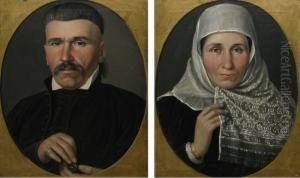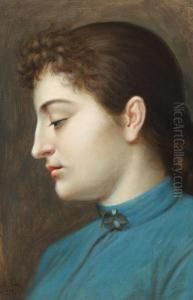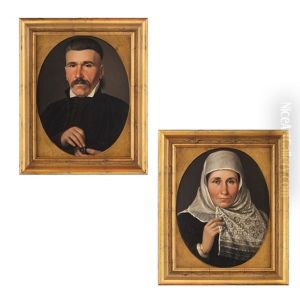Misu Popp Paintings
Misu Popp was a Romanian painter known for his contributions to portrait painting and church decoration during the 19th century. Born on March 19, 1827, in Brașov, a city in the historical region of Transylvania, which at the time was part of the Habsburg Empire and is now in Romania, Popp was exposed to the rich cultural heritage of the region from an early age.
Popp's artistic education began in his homeland, but he also pursued further studies abroad, which was common for many artists of his era seeking to refine their skills and techniques. He exhibited a deep commitment to his Romanian roots and often integrated elements of national identity and folklore into his work.
During his career, Popp became well-regarded for his contributions to religious art, particularly in the painting of Orthodox churches, which was a significant aspect of Romanian cultural life. His work in church decoration is noted for its adherence to the Byzantine tradition, yet Popp also showed an openness to Western artistic influences, bridging different cultural expressions in a manner that was quite progressive for his time.
In addition to his religious works, Misu Popp is remembered for his portraits. He captured the likenesses of many prominent figures of Romanian society, including that of national heroes, intellectuals, and members of the nobility. These portraits are appreciated for their technical skill and the way they encapsulate the social and historical context of 19th-century Romania.
Misu Popp's legacy extends beyond his paintings, as he played a part in the cultural life of Romania, contributing to the shaping of its modern national identity. His death on August 6, 1892, in Brașov, marked the loss of a significant figure in Romanian art, but his works continue to be celebrated for their historical value and artistic merit.


